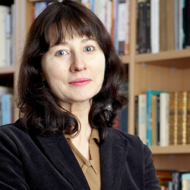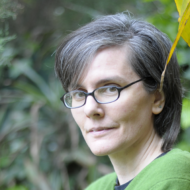This theme in Other Worlds, led by J. M. Coetzee and Gail Jones is designed to complement and overlap with a project Coetzee developed from 2015 to 2018 at the Universidad Nacional de San Martín (UNSAM) in Buenos Aires, Argentina, called Cátedra Coetzee: Literaturas del Sur.
While the theme involves a number of elements underpinned by a series of provocative questions about what it might mean to live in the Southern Hemisphere in the challenging socio-political and environmental climates of the early 21st century, it is based on a simple experiment. What might emerge if writers from the Southern Hemisphere, and specifically, Australia and New Zealand, Southern Africa, and Argentina, were to meet and exchange ideas and work, and develop encounters with one another whose significance they are obliged to consider? Both Cátedra Coetzee: Literaturas del Sur and Other Worlds: Southern Encounters organised such meetings, bringing writers from these regions to Argentina and Australia, arranging for the translation and publication of creative work from English into Spanish and Spanish into English, and opening dialogues that circled around the ineluctably abstract idea of ‘the South’ of our planet as a place.
An idea of how this functioned in practice is given by James Halford, who participated in both places and analysed the experience in two bookended articles published in Sydney Review of Books, which partnered some of the events that took place in Australia. The first of these is called ‘Southern Conversations: Coetzee in Buenos Aires’ and the second is called ‘Southern Conversations 2: Writing the South in Sydney’.
In both cases the experiences, encounters, events, and the sharing of work both in person and through newly translated editions, involved invited writers from the ‘hemispheric South’, which attempted to distinguish itself from, but not displace, the well-known and useful conception of the ‘Global South’. The major point of difference, which it was hoped might be generative even if not completely understood, is that the hemispheric South did not seek to understand itself in metaphorical terms as a way of considering first world/third world dynamics; rather, it was an attempt to understand the South as place, as a species of embodied being on the globe. This concept of place, of course, paradoxically and perhaps incoherently, sought to bring together places separated by vasts of ocean.
The central provocation that is insistently brought to the surface by this theme is the following. Do writers from the Southern hemisphere have anything in common? Do sharing the same latitude (and Adelaide, Sydney, Cape Town, and Buenos Aires, four nodal points in this project all fall between 33-35 degrees latitude South); similar fraught histories of colonisation; similar access to the ongoing wisdom of culturally resilient Indigenous peoples; similar peripheral status to cultural centres of the North, carry with it any functional meaning? Or, to look at this from a different angle, is it possible that new connections and new ideas of global communities might be formed if writers (technicians of relation) were to meet and imagine whatever kinds of affinities into being?
The provocation worked in a number of ways in Other Worlds: Southern Encounters. Firstly, inspired by the Catedra Coetzee in Argentina, which translated a number of visiting writers from Southern Africa and Australia, Southern Encounters built on associations developed by Ivor Indyk of Giramondo Publishing (a key collaborator both in Argentina and Australia, and a participant at the Catedra Coetzee), and two Argentinian writers, Marcelo Cohen and Mariana Dimópulos, were translated from Spanish into English and published by Giramondo Publishing, as part of their Southern Latitudes Series. One of these writers, Mariana Dimópulos, along with three other Argentinian writers – Pedro Mairal, Anna Kazumi Stahl and Samanta Schweblin, were then invited to Australia as Writers in in Residence in the Southern Encounters theme. They visited both Adelaide and Sydney and shared their work and ideas with research teams and the general public through readings, seminars and discussions.
Secondly, members of the Other Worlds team held a number of seminars in which the possibility of conceptualising the hemispheric South was considered.
- Further South: A Roundtable – 18 February, 2018, The University of Adelaide.
- Ideas of the South Seminar – 23 March, 2018, Western Sydney University.
- Islands of the South Seminar – 21 September, 2018, Western Sydney University.
Surely there is some meaning in the coincidence of latitude which carries with it specific climatic zones, shared weather patterns, and traces (seen in flora fauna and geology) of the encounters of the ancient southern Gondawanaland that once held these now distant places together? Surely there is some coincidence of meaning made possible by the powerful traditions of Indigenous peoples in these places that allow for perspectives that cut through and alter the traditions brought to these places by peoples from Europe? Perhaps there is also meaning in the attempt to bypass global nodes, such as the capitals of publishing in English (London and New York) and Spanish (Madrid), and forge direct lines of connection by publishing Australian novels in Argentina, Argentinian novels in Australia?
Finally, the theme was brought together around a series of meetings of Indigenous and non-Indigenous writers from Australia, New Zealand, Southern Africa, and Argentina in a major event held in Sydney in 2019. These culminated in a series of readings and a powerful workshop that continues to resonate. The project continues to grow and has resulted in a number of published outputs.
Photo top: coolantarctica.com













